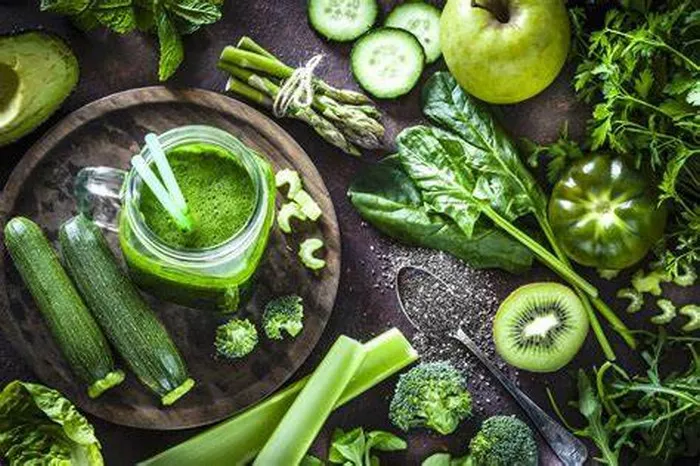Breastfeeding is a profoundly rewarding experience for both mother and child, providing a myriad of benefits that extend far beyond mere nutrition. However, it also places considerable demands on a mother’s body, requiring optimal nutrition to support both her own health and the production of quality breast milk. In recent years, chlorophyll has emerged as a potential ally for breastfeeding mothers, offering a range of benefits that can enhance maternal well-being and the nutritional content of breast milk. In this comprehensive guide, we delve into the science behind chlorophyll and its specific advantages for lactating women.
Understanding Chlorophyll: Nature’s Green Elixir
Chlorophyll is the pigment responsible for the green hue in plants, playing a fundamental role in photosynthesis, the process by which plants convert light energy into chemical energy. Chemically, chlorophyll bears a striking resemblance to hemoglobin, the protein in red blood cells that transports oxygen throughout the body. This structural similarity is not merely coincidental; chlorophyll’s molecular structure is almost identical to that of hemoglobin, differing only in the central atom—magnesium in chlorophyll and iron in hemoglobin.
Nutritional Powerhouse: Essential Nutrients in Chlorophyll
Chlorophyll is abundant in green leafy vegetables such as spinach, kale, and broccoli, as well as in certain algae and herbs. Its vibrant green coloration signifies a rich concentration of vitamins, minerals, and antioxidants, all of which contribute to its nutritional potency. Among its notable components are:
1. Vitamins: Chlorophyll is a rich source of vitamins A, C, E, and K, essential for immune function, collagen synthesis, and bone health.
2. Minerals: It contains an array of minerals including magnesium, iron, calcium, and potassium, which are crucial for muscle function, blood clotting, and electrolyte balance.
3. Antioxidants: Chlorophyll boasts powerful antioxidant properties, combating oxidative stress and reducing the risk of chronic diseases such as cancer and cardiovascular disorders.
4. Chlorophyllin: A water-soluble derivative of chlorophyll, chlorophyllin offers additional health benefits, including detoxification and odor control.
Chlorophyll and Breastfeeding: A Synergistic Relationship
The nutritional demands of breastfeeding are significant, requiring mothers to consume a balanced diet rich in essential nutrients. Chlorophyll offers several advantages that are particularly beneficial during the lactation period:
1. Enhanced Nutrient Absorption: Chlorophyll’s molecular structure facilitates the absorption of nutrients in the digestive tract, ensuring that breastfeeding mothers derive maximum benefit from their diet. This is especially important for nutrients like iron and calcium, which are crucial for maternal health and milk production.
2. Blood-Building Properties: The resemblance between chlorophyll and hemoglobin extends beyond their structural similarity; chlorophyll also exhibits blood-building properties, stimulating the production of red blood cells and improving overall circulation. For breastfeeding mothers, this translates to increased oxygen delivery to tissues and enhanced energy levels.
3. Detoxification Support: During lactation, toxins can accumulate in the body and potentially transfer to breast milk, compromising its quality and safety. Chlorophyll’s detoxifying effects help rid the body of harmful substances, reducing the risk of toxin exposure for both mother and child.
4. Anti-Inflammatory Effects: Inflammation is a common concern during breastfeeding, contributing to issues such as mastitis and sore nipples. Chlorophyll’s anti-inflammatory properties help alleviate discomfort and promote healing, ensuring a smoother breastfeeding experience for mothers.
5. Immune System Boost: The immune-boosting properties of chlorophyll are invaluable for breastfeeding mothers, who are particularly vulnerable to infections due to the demands of lactation. By bolstering immune function, chlorophyll helps mothers ward off illness and maintain optimal health.
Incorporating Chlorophyll into the Breastfeeding Diet
Integrating chlorophyll-rich foods into the breastfeeding diet is simple and convenient, offering a natural way to reap its benefits. Some easy ways to incorporate chlorophyll include:
1. Green Smoothies: Blend leafy greens such as spinach, kale, or Swiss chard with fruits like bananas or berries for a refreshing and nutrient-packed beverage.
2. Salads: Create vibrant salads using a variety of fresh vegetables and herbs, including spinach, arugula, and parsley, drizzled with a zesty vinaigrette.
3. Herbal Teas: Enjoy herbal teas made from chlorophyll-rich herbs such as peppermint, parsley, or cilantro, which offer a soothing and hydrating alternative to caffeinated beverages.
4. Supplements: For those who struggle to meet their chlorophyll requirements through diet alone, chlorophyll supplements are available in various forms, including capsules, powders, and liquid extracts.
Safety Considerations and Potential Side Effects
While chlorophyll is generally considered safe for most individuals, some precautions should be observed, particularly during breastfeeding:
1. Allergies: Individuals with allergies to green vegetables or related plants may experience allergic reactions to chlorophyll supplements. It is advisable to start with small doses and monitor for any adverse effects.
2. Medication Interactions: Chlorophyll supplements may interact with certain medications, including blood thinners and certain antibiotics. Consultation with a healthcare professional is recommended before starting any new supplement regimen.
3. Stool Discoloration: One common side effect of chlorophyll supplementation is green discoloration of the stool. While harmless, it may cause alarm if unexpected, especially in infants who are exclusively breastfed. Mothers should be aware of this possibility and reassure themselves and others if it occurs.
Conclusion
In conclusion, chlorophyll offers a myriad of benefits for breastfeeding mothers, ranging from enhanced nutrient absorption to detoxification support and immune system boosting. By incorporating chlorophyll-rich foods into their diet or supplementing as needed, mothers can optimize their health and the quality of their breast milk, ensuring the best possible start for their little ones. However, it is essential to exercise caution and consult with a healthcare professional before making any significant dietary changes or starting new supplements, particularly during the delicate breastfeeding period. With proper knowledge and guidance, breastfeeding mothers can harness the power of chlorophyll to thrive on their journey of motherhood.


